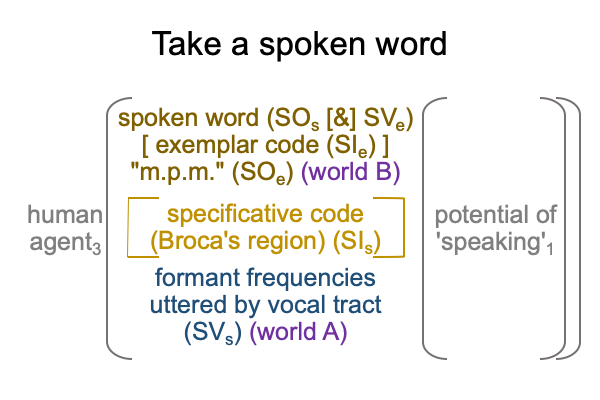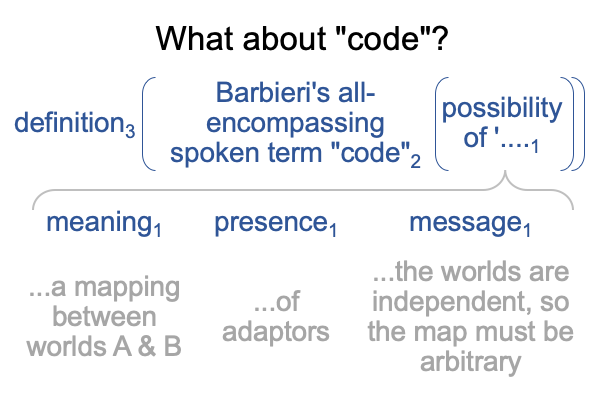0424 Here is another example for neural codes.

0425 In the specifying sign-relation, formant frequencies uttered by a vocal tract (parole) (SVs) in the external world (A) stands for a spoken word (langue, an item in a mental system of differences) (SOs) in regards to rapid associations between parole and langue that occurs in specialized regions of the brain (SIs).
In the exemplar sign-relation, a spoken word (langue) (SVe) stands for an exemplar of ‘meaning, presence and message’ (“m.p.m.”; SOe) in my world (B) according to definition (SIe).
0426 Definition?
Is a definition3 a normal context3 like the content-level question, “What is happening?3a“
Consider the following juxtaposition.

0427 The author provides one illustration, titled, “Box 1”, listing various definitions of words in classic dictionary style. For the past few centuries, encyclopedists have labored to keep track of and pin down the meanings of spoken words. The effort is crucial to constructing and maintaining scientific disciplinary languages.
0428 Consequently, I can imagine a similarity between the human agent3 engaged in definition3 and the stance of a human agent3 asking the question, “What is happening?”3a.
0429 But, there is a difference, as well.
The problem is that the former normal context may be called, “explicit abstraction”, and the latter may be called, “implicit abstraction”.
The difference between the potential of meaning, presence and message1 and the possibility that ‘it is something’1acannot be swept under the cognitive table. One is counter-intuitive and the other is intuitive.
0430 I can take that lesson all the way to the core term in this chapter.

Barbieri’s signature book is titled, Code Biology: A New Science of Life (2015, Springer Dordecht).
